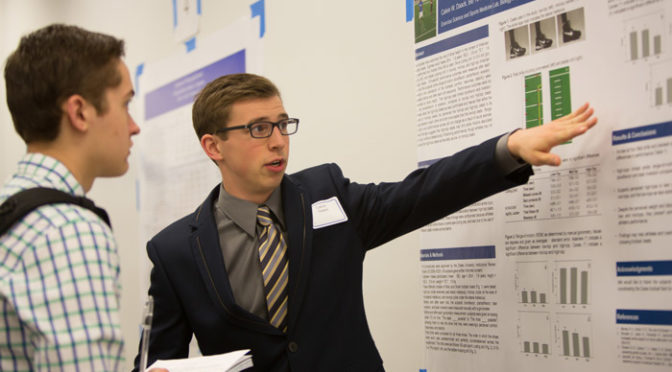Theatre for social change
Last spring, students from Art of the Interview together with Law, Politics, and Society major Clare VanEchaute interviewed Drake women on campus about their experiences with gender violence. The interviews turned into a series of theatre scenes entitled “How It Goes.” Last spring, the students performed the piece to Roosevelt High School students in Petra Lange’s Women in Literature course, sponsored by the Slay Fund for Social Justice and the Drake Sociology program. We hosted the high school students for breakfast and had a discussion afterwards. We also listened to their poetry readings as part of an exchange.
At Drake’s Welcome Week, “Sex, Drugs, & Drake” included two of the scenes from “How It Goes” into the performance. Alysa Mozak was an advocate for the scenes’ inclusion because they captured the experiences with gender violence on campuses.
The process and theatre piece generated rich learning for students and an opportunity to learn about interviewing, sociological research, an important social issue, and how to use theatre for social change.
—Submitted by Darcie Vandegrift, Associate Professor of Sociology, Department Chair
John Graham elected to VASTA board of directors
John Graham, associate professor of theatre, has been elected to the Board of Directors of the Voice and Speech Trainers Association (VASTA), an international organization dedicated to advancing “the art, research, and visibility of the voice and speech profession.”
—Submitted by John Graham
Drake granted neuroscience honor society charter
Over the summer, Drake was approved to shelter a chapter of Nu Rho Psi, the National Honor Society in Neuroscience. Drake’s is the 53rd charter issued since the society was established in 2006 and the first in Iowa. Brian Sanders, professor of psychology and neuroscience, will be the faculty adviser for the chapter.
Drake has approximately 60 neuroscience students who are active in summer research opportunities at major research institutions and the Drake University Conference on Undergraduate Research in the Sciences (DUCURS).
The decision to issue a charter for Drake was unanimous. Comments from the reviewers included:
- “Clearly, Drake University is a very special place and I’m excited to have one of our national chapters there.”
- “Drake University offers a well-established neuroscience major with strong, interdisciplinary course offerings.”
- “The neuroscience faculty are relatively sizeable, include a diverse range of research interests, are productive in scholarship, and engaged with students in the classroom and in the laboratory.”


